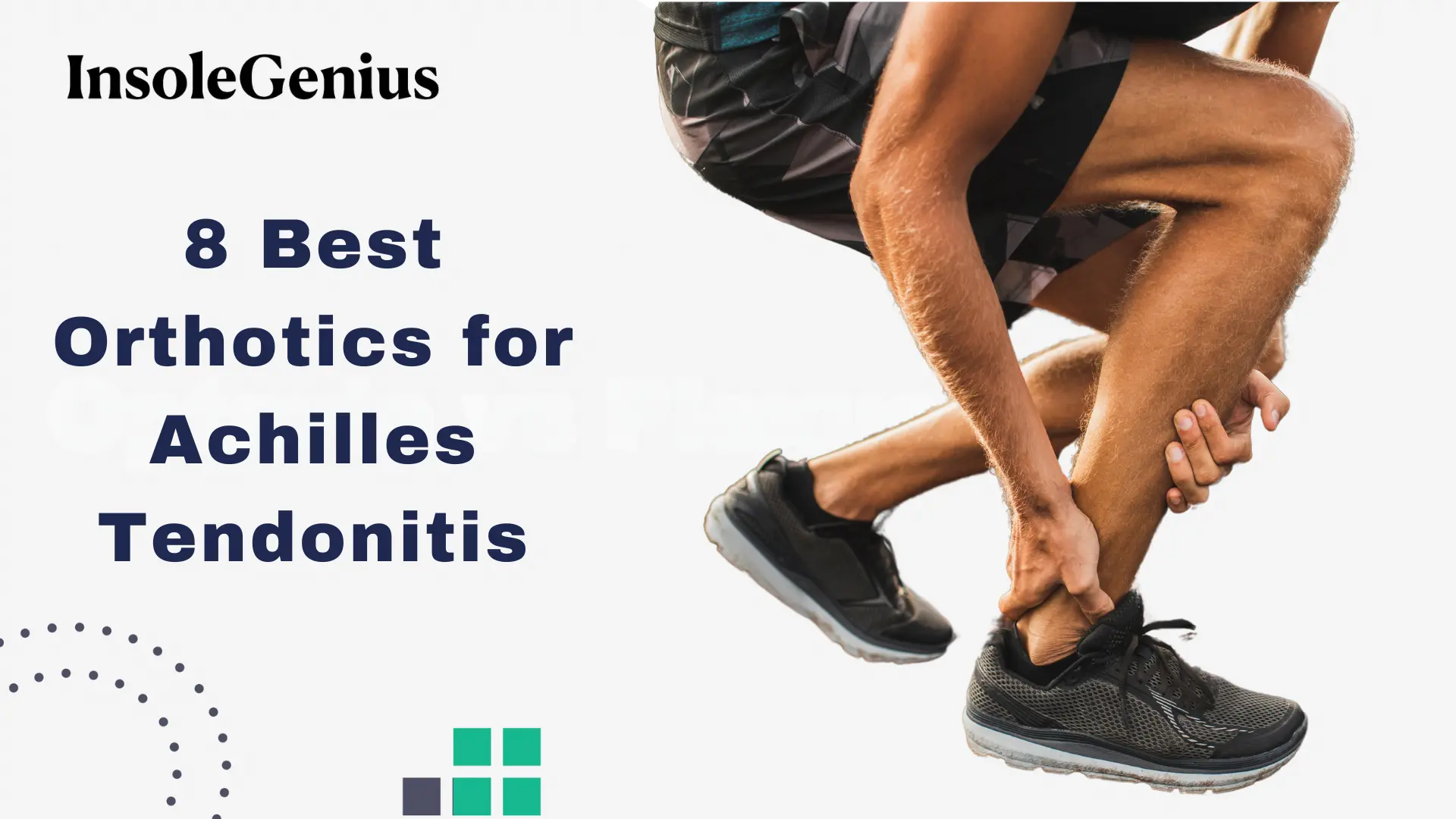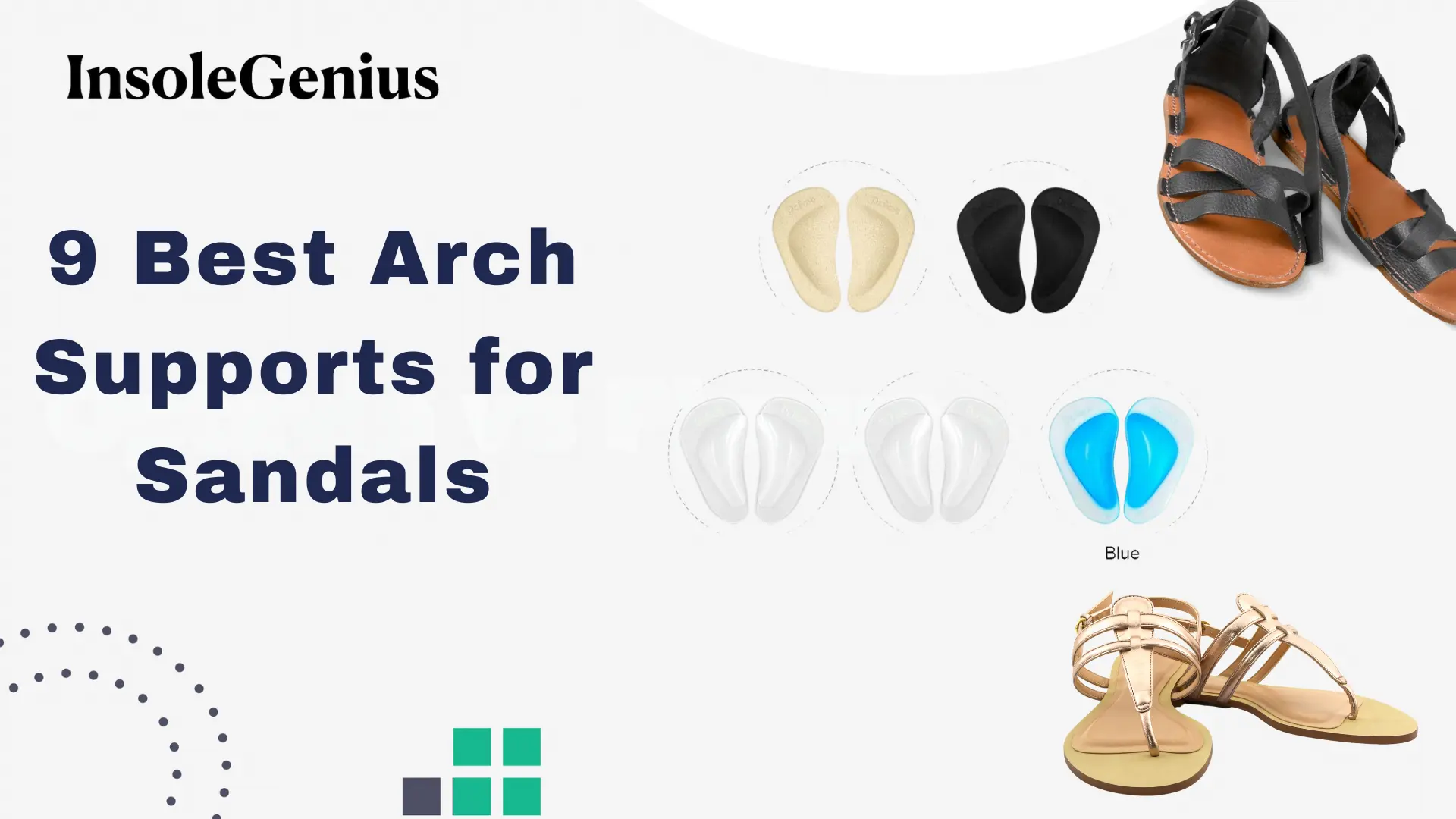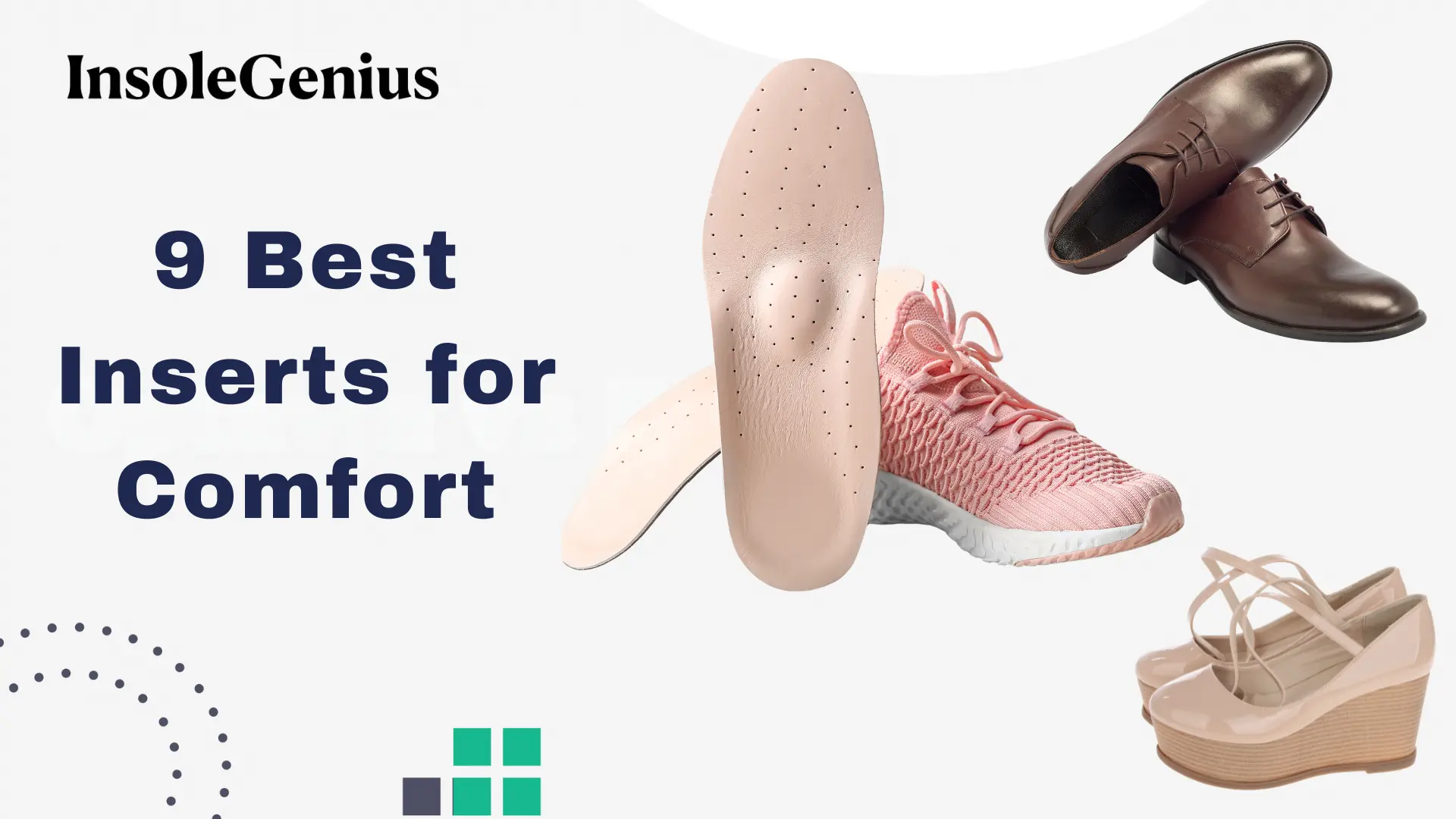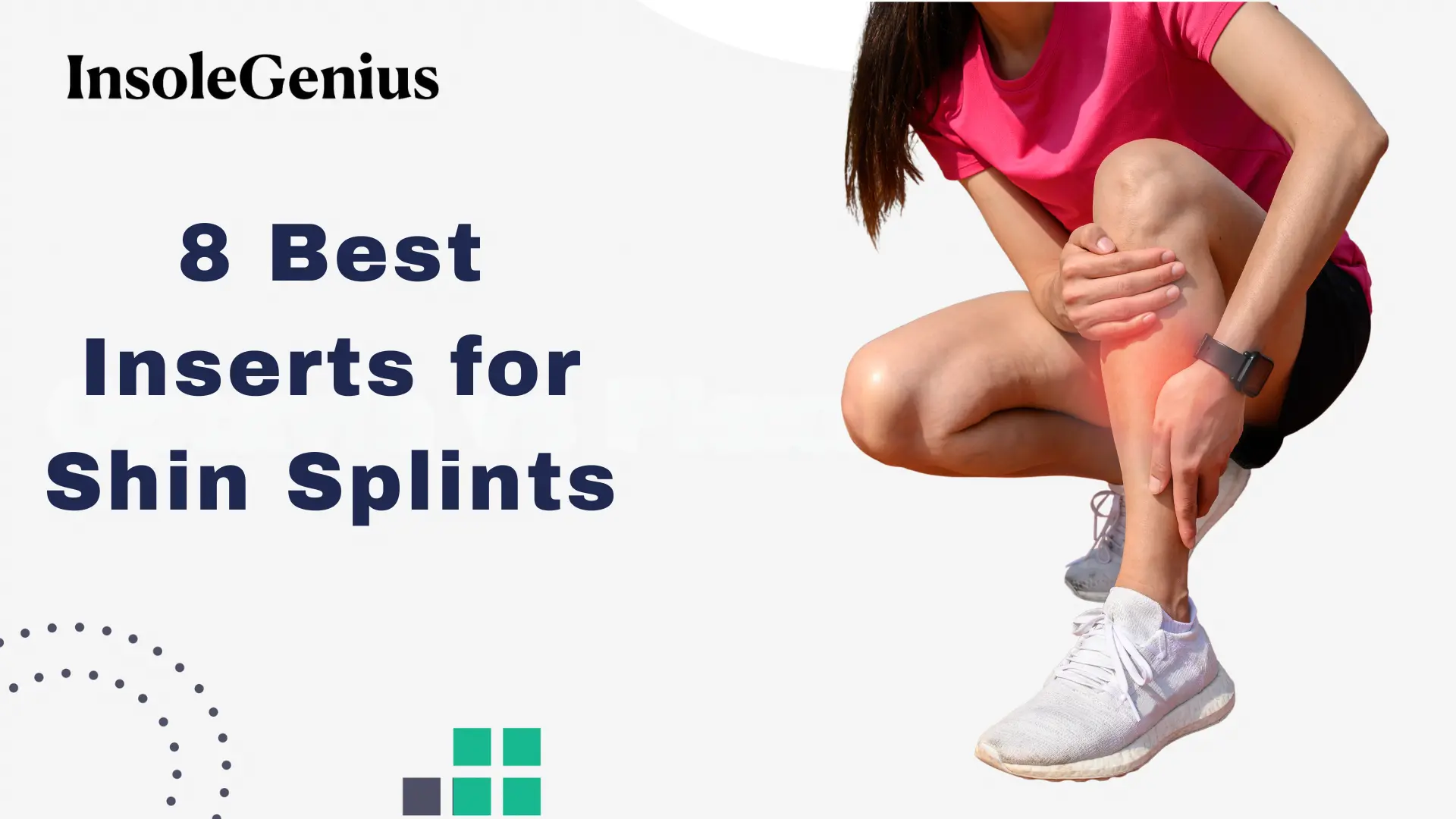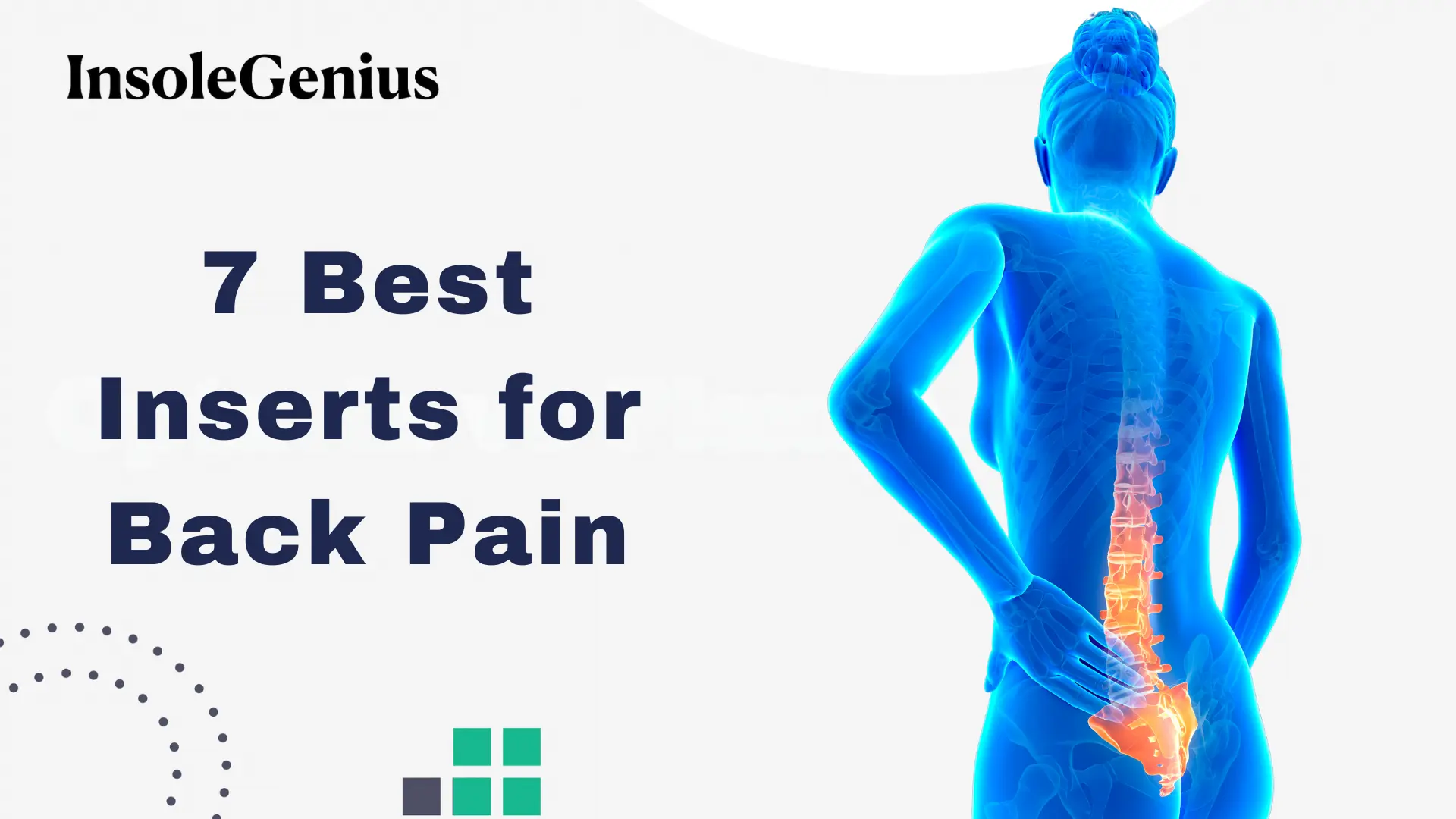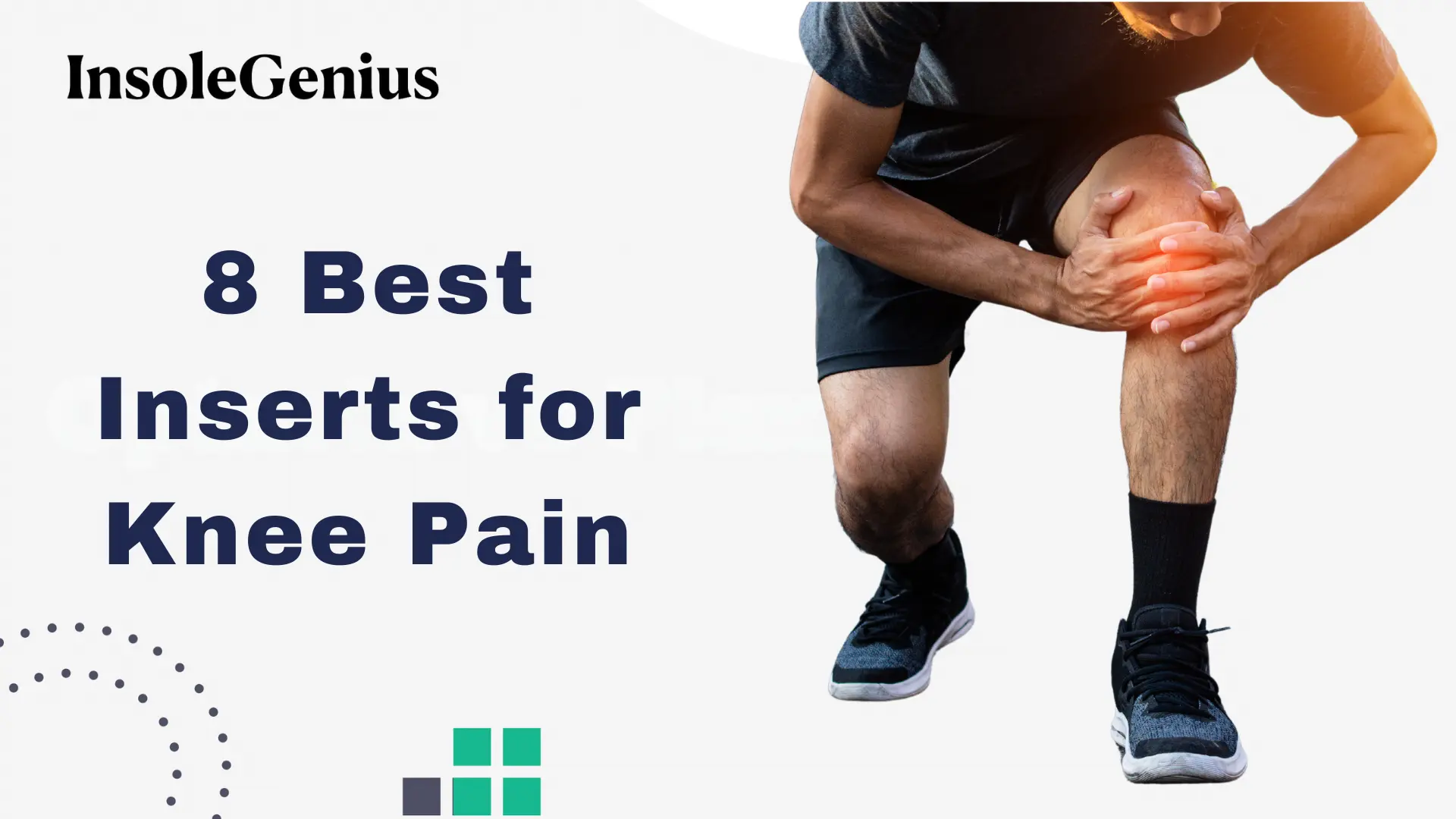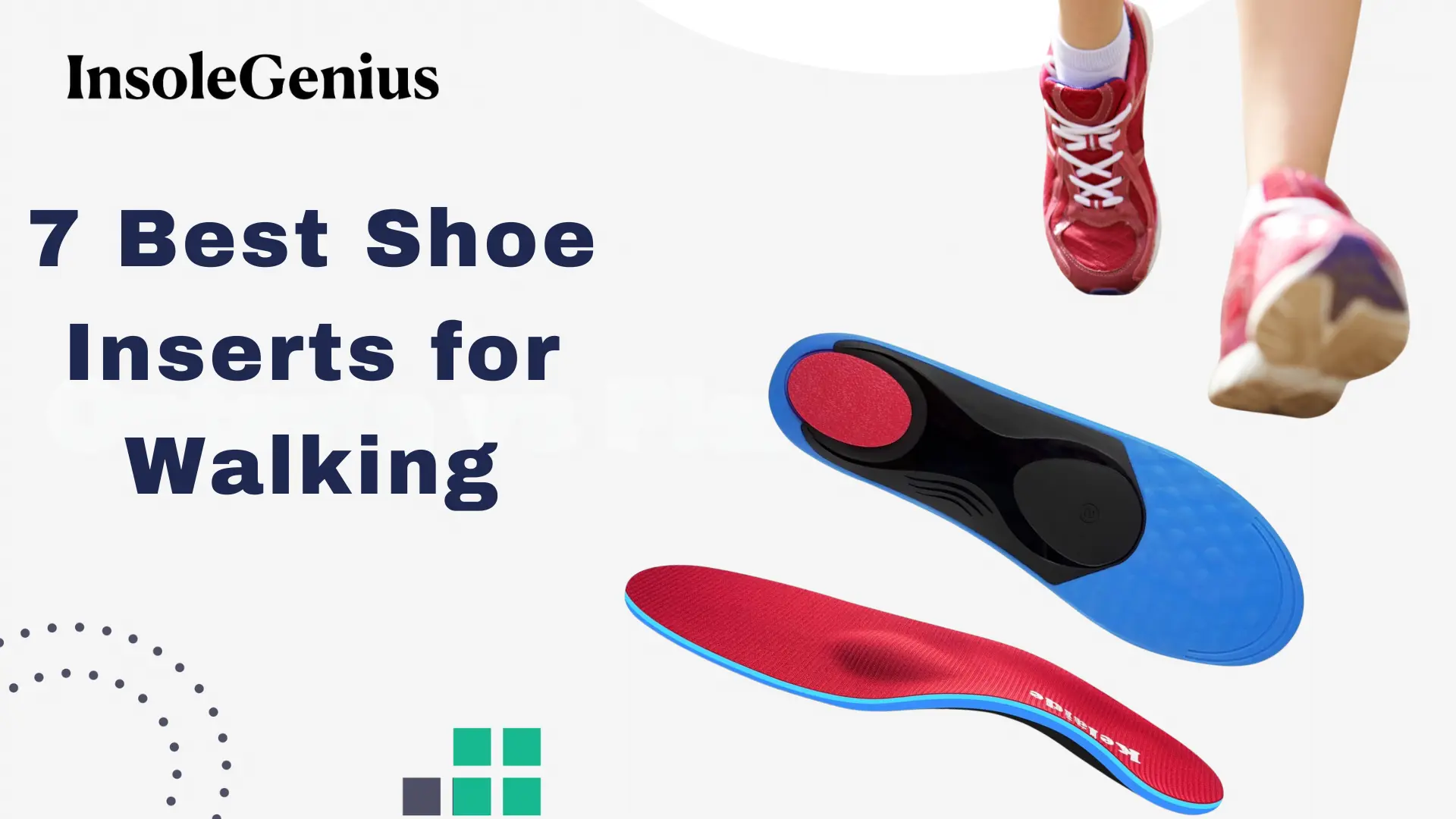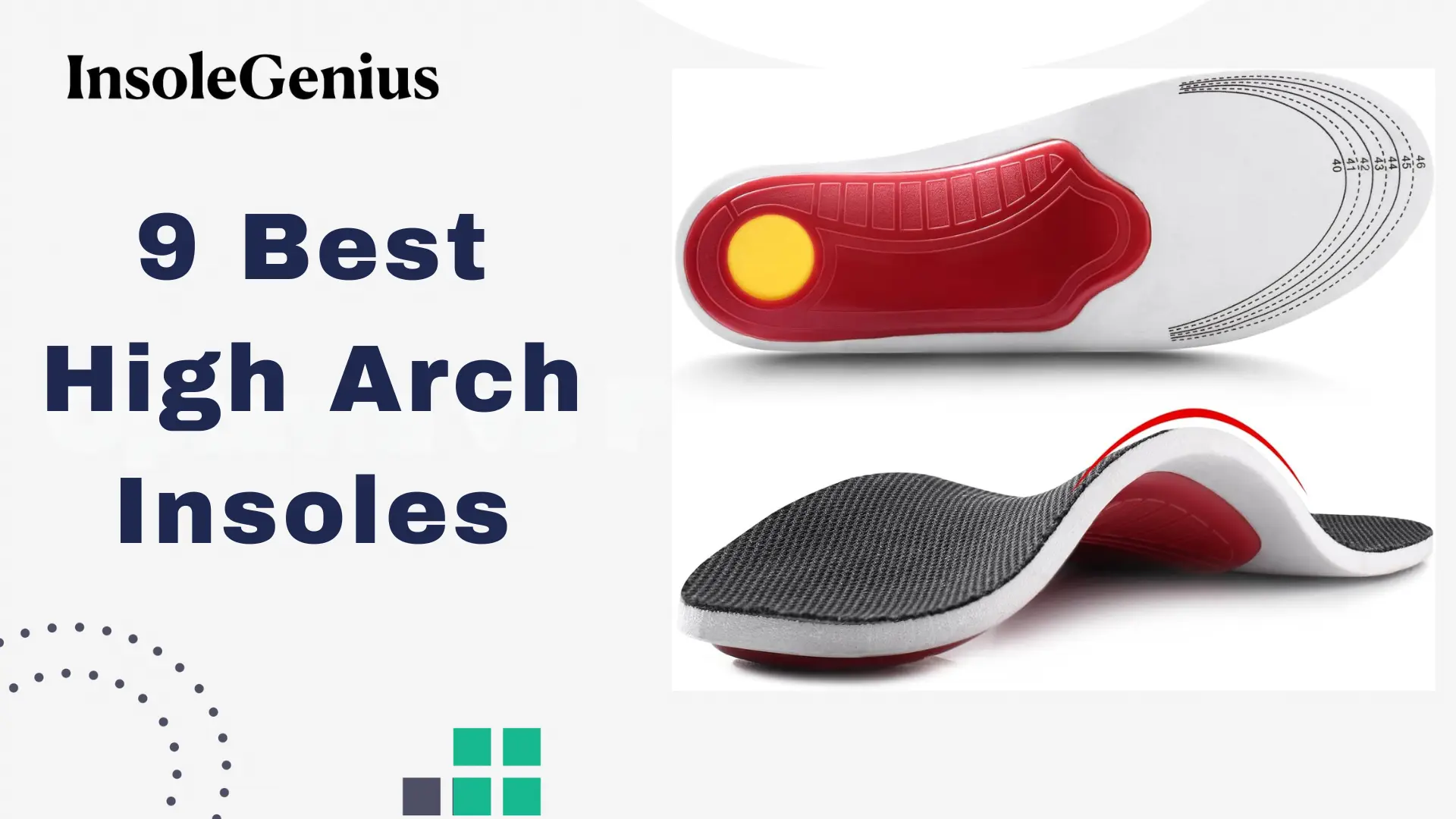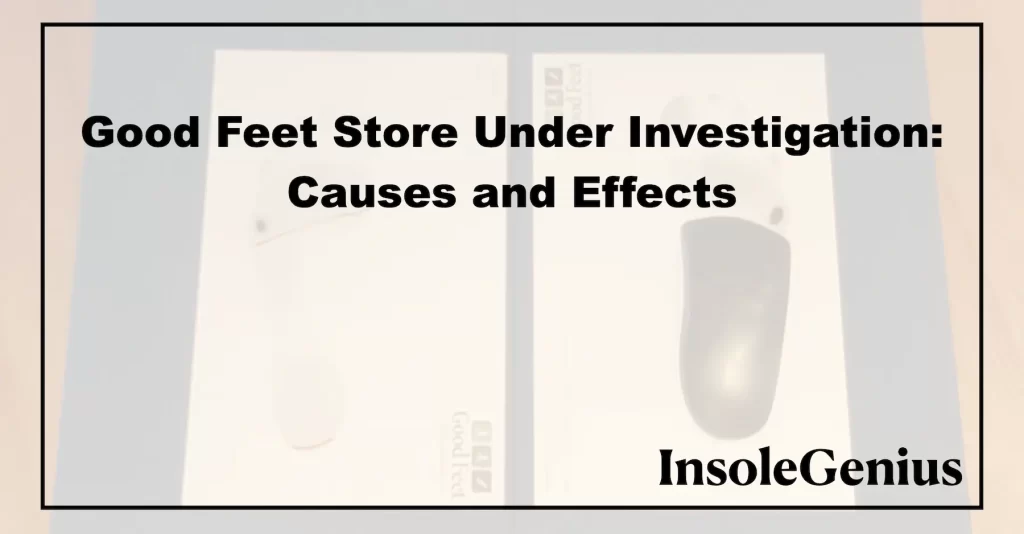Get your arch supports with
insole genius
We help with your foot comfort through deep dives into topics of Orthotic insoles, foot health, and Biomechanics. Our articles maintain a high degree of informational integrity, deconstructing complex topics such as footwear technology, foot health, foot conditions, gait analysis, and much more.
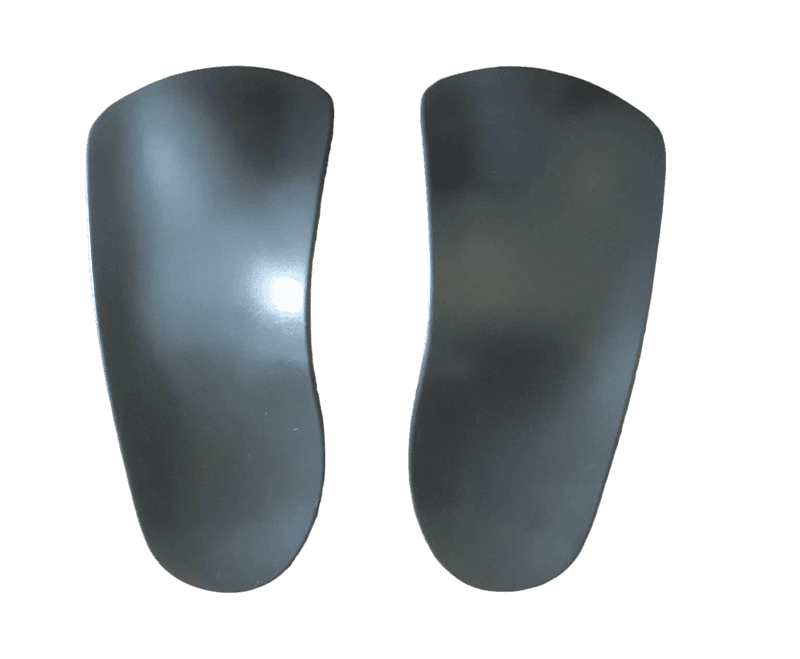
Our Process
At Insole Genius, our review process for insoles is meticulous and rooted in scientific analysis. We begin by conducting thorough biomechanical assessments, including gait analysis and foot pressure mapping, to evaluate each insole’s support and comfort level.
Research
Our first step involves extensive research into the latest insole technologies and materials.
Design
Meticulous evaluation of the insole’s design, examining materials, structure, and intended use.
Test
We rigorously test the insoles in a variety of real-world scenarios.
Write
We compile our insights into comprehensive reviews.
Shoe Insoles: Definition, Types, Benefits, and Brands
The shoe insoles, also known as shoe inserts, arch supports, or orthotics, are specially designed devices, typically inserts or built-in components of footwear, that provide support to the arches of the feet. Their primary function is to help distribute body weight evenly across the foot, reducing pressure on certain areas and promoting a more natural foot posture.
We can assess how effective shoe inserts are by using certain measurements, like the Arch Index. The Arch Index provides a snapshot of the footprint’s shape, which is a reflection of the foot structure. In her 2022 study, Ting-Ting Wu from Chinese Culture University demonstrated that arch supports can help alleviate foot pain by ensuring forces are applied more appropriately across the foot’s sole.
The foot arch is a structural characteristic of the human foot that comprises an upward curve in the middle of the foot. It’s formed by the tarsal and metatarsal bones, and strengthened by ligaments and tendons. The foot arch’s variation is a key attribute taken into account when designing footwear, especially orthopedic ones, as stated by Shuping Xiong from Shanghai Jiao Tong University in the 2010 study titled ‘Foot arch characterization.’
The arches of the feet, constituted by the tarsal and metatarsal bones, strengthened by ligaments and tendons, allow the foot to support the weight of the body in the erect posture with the least weight. The foot arch serves multiple crucial functions. It provides necessary shock absorption for the foot during activity, protecting the foot from injury. It also contributes to foot flexibility and rigidity, which are essential during different phases of the gait cycle.
The absence or collapse of these arches, commonly referred to as flatfoot, can lead to various complications such as increased fatigue in the lower extremities, a higher risk of injury, and difficulty in prolonged walking or running due to lack of shock absorption and stable support.
What Are The Types Of Inserts?
These are the 7 different types of shoe inserts.
- Arch Support Inserts
- Arch Support Pads
- Arch Support Footwear
- Arch Support Sleeves
- Arch Support Tapes
- Arch Support Socks
- Custom-Made Orthotics
1. Arch Support Inserts
Arch support inserts, also known as foot orthoses, insoles, or inner soles, are shoe inserts made from plastic material specifically designed to provide support and alignment to the arch of the foot. According to the 1991 study by Dr. Michael L Gross from Orthopaedic and Sports Medicine Associates, arch support inserts demonstrated a 75.5% symptom improvement in conditions related to flatfoot.
Dr. Gross found that wearing arch support inserts can reduce the peak vertical ground reaction force (GRF) in the heel by 6.9% of body weight, increase the peak vertical GRF by 7% of body weight, and lead to better medial-lateral control of the foot’s center of pressure.
2. Arch Support Pads
Arch support pads are special inserts or devices placed in shoes to provide additional support to the arch of the foot. They come in different forms such as heel cups, gel pads, silicone pads, and correction pads. Arch support pads can help alleviate foot pain, enhance postural stability, maintain balance, and potentially prevent falls, especially in older adults, as evidenced by a 2014 study conducted by Tzu-Hsuan Chen from Mackay Memorial Hospital. These pads work by helping to distribute pressure evenly across the foot, reducing strain on the arch, and aligning the foot and lower leg correctly for better mobility and stability.
In a study titled “Effectiveness of a heel cup with an arch support insole on the standing balance of the elderly,” 50 participants wore the arch support heel cup for at least 4 hours daily over 8 weeks and saw significant stability improvements.
3. Arch Support Footwear
Arch support footwear refers to shoes, sandals, sneakers, house shoes, flip flops, and boots with built-in arch support that are specifically designed to provide support to the natural arch of the feet. A 2022 study by Haddaya Umar from Rawalpindi Medical University showed that from 101 people with plantar fasciitis, the majority (83.2%) of participants wore inappropriate shoes, while only 16.8% wore recommended shoes with built-in arch support, as shown in this graph.
The study titled “Impact of routine footwear on foot health” concludes that footwear plays a crucial role in causing plantar fasciitis, and shoes with minimal heel height, thin soles, and hard insoles without arch support are particularly linked to the development and exacerbation of heel pain in individuals with plantar fasciitis.
The choice of arch support shoes may vary based on the individual’s foot structure, the severity of their condition, and their specific needs.
4. Arch Support Sleeves
Arch Support sleeves are compression sleeves with built-in arch support designed to provide support and relief for fallen arches, flat feet, and plantar fasciitis. They are made of inexpensive, lightweight, and soft materials, with a moisture-wicking top layer fabric to keep your feet dry. Popular brands like Cooper Fit offer these arch-support sleeves.
While there is no scientific evidence proving their efficacy, online reviews, and anecdotal stories suggest that the results are mixed. Some people find them comfortable and effective, while others feel that they are a waste of money and provide no help at all. For some individuals, these arch support sleeves have been more effective than expensive podiatrist-recommended insoles. This video explains the benefits of using arch-support sleeves.
5. Arch Support Tapes
Arch support tape is a kinesiology tape used for taping technique that temporarily supports the medial longitudinal arch of the foot. A 2015 study by Tim Newell from Thomas More College found that the use of arch support tape can help maintain the shape and height of the arch, preventing it from collapsing inward when weight is placed on the foot, as illustrated in this chart.
Using arch support tape also reduces motion at the midtarsal joints, altering how the forefoot adapts to the ground and reducing the amount of pressure placed on that region. Arch support taping techniques are often used as a temporary treatment for athletes with pain or injury due to overpronation. If athletes respond well to these techniques, more permanent solutions, such as orthoses, can be implemented.
6. Arch Support Socks
Arch support socks are socks that are designed to provide cushioning and compression to support the arches of the feet. While there is no scientific evidence to prove their effectiveness, some manufacturers claim that arch-support socks can be beneficial for individuals with foot conditions such as plantar fasciitis and flat feet. While they may not provide the same level of support as custom-made arch support inserts, they can offer some relief from the discomfort and stress caused by these conditions.
The effectiveness of arch support socks depends on factors such as the materials used, the positioning of the cushioning, and the fit of the socks. Arch support socks are not a cure or treatment for foot conditions.
7. Custom-Made Orthotics
Custom-made arch supports, also known as custom-made foot orthoses or orthopedic insoles, are contoured devices designed to be inserted into shoes. They are created from a plaster cast or three-dimensional laser scan of the individual’s foot.
The purpose of custom-made arch supports is to provide cushioning and off-loading of foot structures, ultimately aiming to alter the function of the foot and lower limb joints during weight-bearing activities such as standing, walking, or running.
This can help reduce pain, improve foot function, and enhance the individual’s quality of life. In this video, Michael J. Helms, DPM from Indy Podiatry discusses the various conditions that can be improved with the use of custom orthotics.
Custom-made arch supports are often used in conjunction with standard medical care for patients experiencing foot and lower limb issues, including pronated foot, plantar heel pain, rheumatoid arthritis, juvenile idiopathic arthritis, risk of diabetic plantar ulceration, or hallux valgus (bunions).
Despite their higher cost compared to prefabricated or over-the-counter options, custom-made foot orthoses are often considered the gold standard in foot care. The increased cost is due to the personalized nature of these supports, which are specifically tailored to the individual’s foot structure and needs.
What Are The Benefits Of Shoe Inserts For Common Foot Conditions?
The benefits of using shoe inserts for common foot conditions are shown below.
- Shoe inserts help treat plantar fasciitis
- Shoe inserts help manage symptoms associated with flat feet
- Shoe inserts are good for fallen arches
- Bunion pain can be alleviated with the help of shoe inserts
- Metatarsalgia can be managed with shoe inserts
- Shoe inserts help manage overpronation
- Shoe inserts Help Alleviate Symptoms Of Achilles Tendonitis
- Shoe inserts can help with Morton’s neuroma
- A heel spur can be treated with shoe inserts
1. Shoe Inserts Helps To Treat Plantar Fasciitis
Plantar fasciitis is a common foot condition, impacting up to 1% of U.S. adults, according to the 2013 National Health and Wellness Survey. It involves chronic heel pain in adults, often attributed to the overuse or excessive load on the plantar fascia, a band of tissue found along the bottom of your foot.
Shoe Inserts help treat Plantar fasciitis by offering additional support and cushioning for the heel and the arch of the foot, reducing the pressure and strain on the plantar fascia. This support can help alleviate the pain and tenderness predominantly found on the medial aspect of the calcaneus near the sole of the heel, which characterizes plantar fasciitis.
Arch supports are an important component of a non-surgical treatment plan for managing plantar fasciitis. According to a 2008 study by Steven K. Neufeld titled “Plantar fasciitis: evaluation and treatment,” this comprehensive approach is successful in relieving symptoms in approximately 90% of patients.
2. Shoe Inserts Help Manage Symptoms Associated With Flat Feet
Flat foot, also known as “pes planus,” is a common foot condition where the arches on the inside of the feet are flattened, allowing the entire soles of the feet to touch the floor when standing up. This condition can occur when the arches don’t develop properly during childhood, or they can collapse in adulthood due to various reasons.
Shoe Inserts help manage symptoms associated with flat feet by significantly improving plantar pressure distribution. A 2016 study by Jun Na Zhai from Xi’an Jiaotong University involving 15 college students with flexible flatfoot found that after wearing orthotic insoles for three months, there was a significant improvement in plantar pressure.
These supports were beneficial not only for walking on flat ground but also for walking up and down stairs of 10cm and 20cm in height. The results showed that these arch support insoles could mitigate foot arch deformation when descending stairs, reducing potential injury.
3. Shoe Inserts Are Good For Fallen Arches
Fallen arches refer to a condition that develops in adulthood due to various reasons, such as injury, obesity, or arthritis, where a person who previously had normal arches now has flat feet. People with Fallen arches may experience discomfort, pain, or other issues due to the uneven distribution of body weight across the foot.
According to a 2020 study by Yao-Te Wang from the National Yunlin University of Science and Technology, shoe insoles are beneficial for individuals with fallen arches. They assist in redistributing pressure evenly across the foot, enhancing body stability, and preventing plantar collapse, which is when the foot’s arch collapses under body weight.
4. Bunion Pain Can Be Alleviated With The Help Of Shoe Inserts
A bunion, also known as hallux valgus, is a painful and bony deformity that forms on the side of the foot, just below the big toe. It occurs when the big toe joint moves out of its normal position due to years of pressure on the big toe tip or inherited foot shape.
Factors such as foot injuries, rheumatoid arthritis, wearing narrow or tight shoes, and regularly wearing high heels can increase the risk of developing bunions.
Based on a 2021 study conducted by Mei-Ying Kwan from The Hong Kong Polytechnic University, bunion pain can be alleviated with the help of arch supports. The study suggests that dynamic arch supports and static arch supports equipped with a toe separator can decrease the Hallux Valgus Angle by approximately 2.1° to 5.79° among patients suffering from bunions.
5. Metatarsalgia Can Be Managed With Shoe Inserts
Jean-Luc Besse from Hospices Civils de Lyon defines metatarsalgia as pain in the forefoot under one or more of the metatarsal heads. Treatment strategies for metatarsalgia vary and can include surgery, but it remains controversial. The causes of metatarsalgia can be anatomical, acquired, or a result of previous foot surgery.
Metatarsalgia can be managed with arch supports by redistributing pressure and supporting the foot. Arch support insoles are designed to correct hindfoot varus or valgus, support the medial arch, transfer pressure sites, and decrease loads.
6. Shoe Insoles Help Manage Overpronation
Overpronation is a foot movement where the medial longitudinal arch collapses, causing tension in certain foot and leg muscles. It is common in adulthood and can lead to deformities and musculoskeletal injuries.
According to a 2019 research published in the European Journal of Sport Science, arch supports help manage overpronation and potentially aid in the treatment and prevention of conditions such as Medial Tibial Stress Syndrome (MTSS), often experienced by runners.
In a study by Aynollah Naderi from the Shahrood University of Technology involving novice runners with MTSS and healthy novice runners, the application of arch-support inserts during running was found to effectively correct imbalances in foot-pressure distribution patterns associated with overpronation.
7. Shoe Inserts Help Alleviate Symptoms Of Achilles Tendonitis
Achilles tendinitis, also referred to as Achilles tendinopathy, is a condition that causes pain, inflammation, and stiffness in the Achilles tendon, which is the large tendon located at the back of the ankle and lower leg. This tendon connects the calf muscles to the heel bone and is used when you walk, run, climb stairs, and perform other similar activities.
Based on a 2019 study by Kawin K W Lee from Queen Mary Hospital, arch supports help alleviate symptoms of Achilles tendonitis. The research involved evaluating the effectiveness of two types of orthotic treatments customized arch support and heel lift, in reducing the load on the Achilles tendon and its loading rate in recreational runners with flat feet.
While there was no significant difference in the reduction achieved between the two types of orthoses, the use of customized arch support yielded a slightly lower mean peak Achilles Tendon load and loading rate than heel lift.
8. Shoe Inserts Help With Morton’s Neuroma
Morton’s neuroma is a painful condition that affects the ball of your foot, most commonly the area between your third and fourth toes. It involves a thickening of the tissue around one of the nerves leading to your toes. This can cause a sharp, burning pain in the ball of your foot, and your toes may sting, burn, or feel numb.
Shoe inserts help with Morton’s neuroma by providing relief and improving function. According to a study conducted by Hilda Alcântara Veiga de Oliveira and colleagues at the Universidade Federal de Sao Paulo in 2019, arch support can be beneficial for patients with Morton’s neuroma by relieving pain during walking and improving general foot function and health-related quality of life.
9. A Heel Spur Can Be Treated With Shoe Insoles
A heel spur is a calcium deposit causing a bony protrusion on the underside of the heel bone. It is often associated with plantar fasciitis, a condition that causes inflammation and pain in the band of tissue that runs across the bottom of your foot.
Arch supports can be used to treat heel spurs by reducing pressure on the heel, which can help alleviate pain and promote proper foot alignment according to a 2015 study by Edward Kwame Agyekum from Jiamusi Central Hospital. The arch supports to aid in absorbing shock and decreasing inflammation related to heel spurs. By doing so, they can address the mechanical factors leading to the pain in conjunction with other treatments like rest, physical therapy, and stretching.
shoe inserts and arch support fundamentals
Our article reviews on the best shoe insoles are grounded in a deep understanding of shoe inserts and arch support fundamentals, tailoring recommendations based on specific foot conditions, types of footwear, and intended activities.
GOOD FEET
An in-depth look at the Good Feet Store’s arch supports through comprehensive hands-on reviews. Learn more about the company’s offerings, including its range of products, insoles, and shoes, and gain insights into the experiences of its customers.

